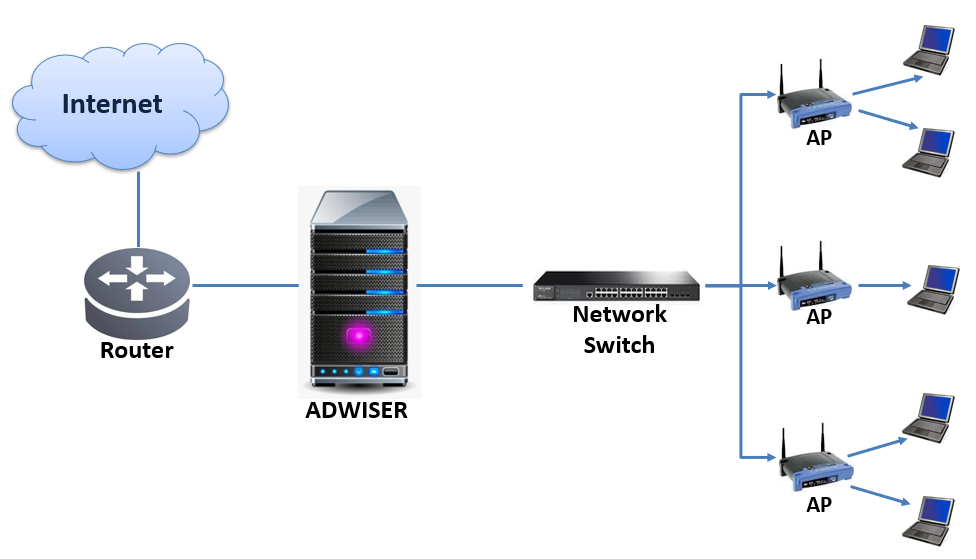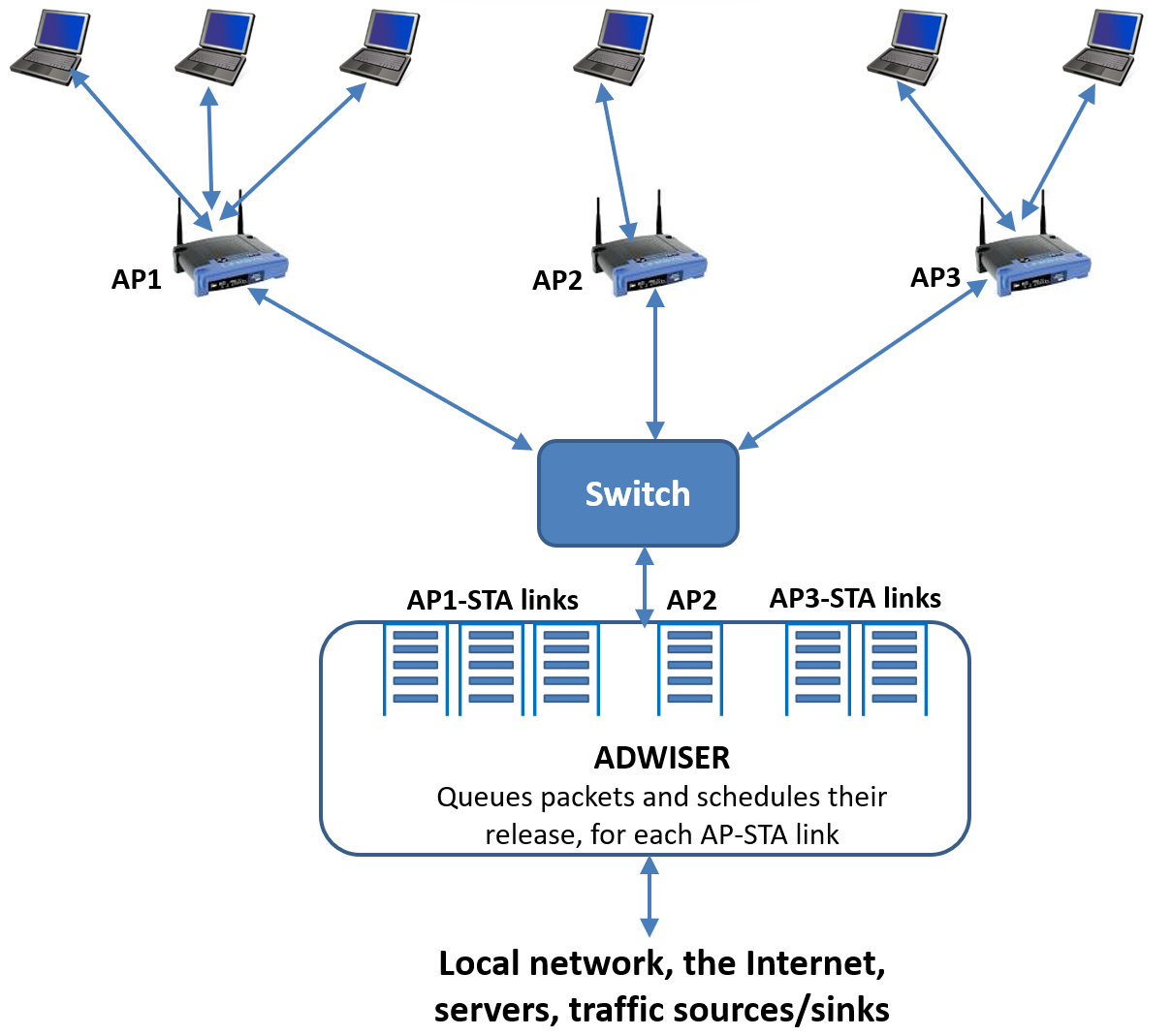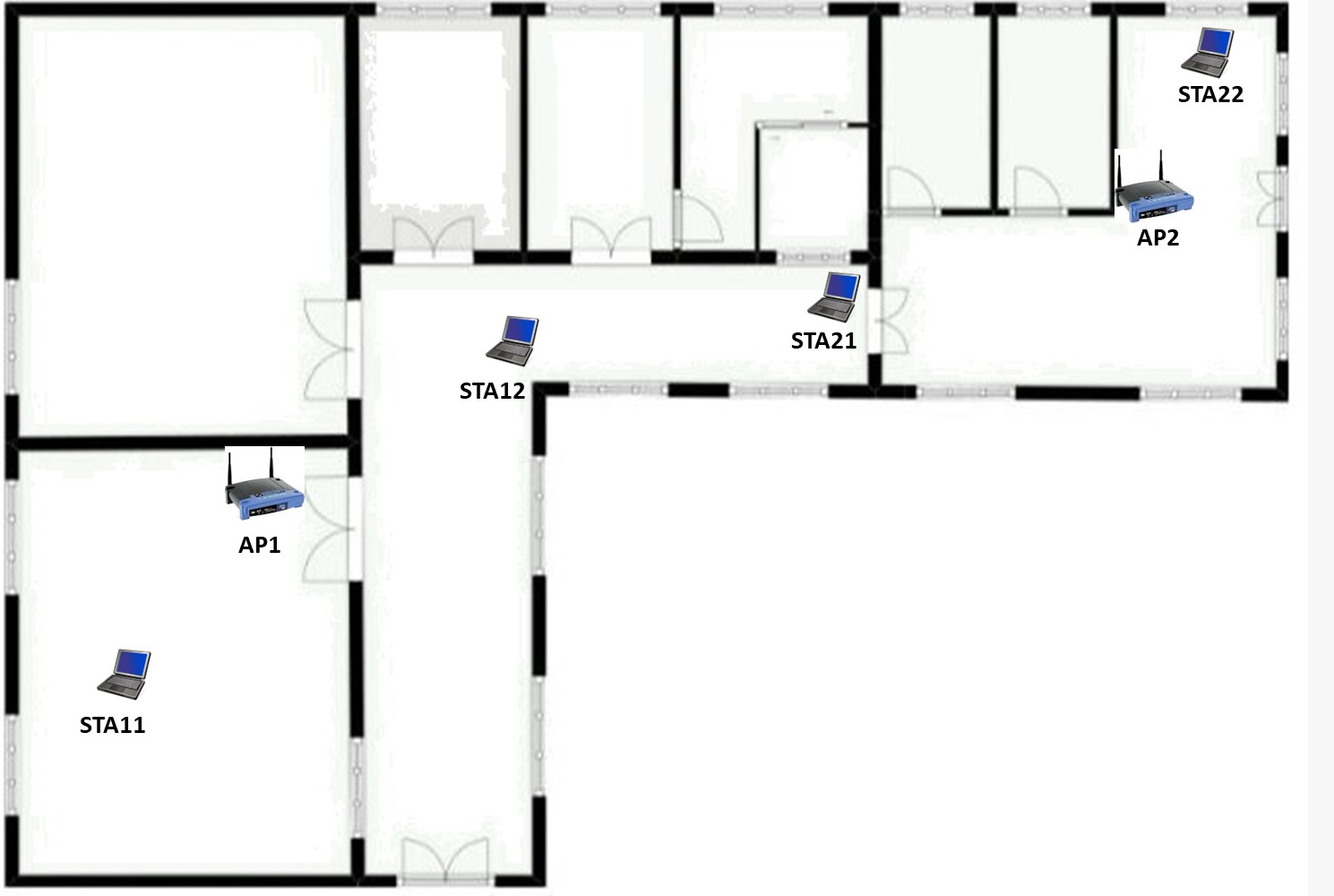ADWISER maintains separate queues for each individual AP-STA link and controls link activation by controlling the release of packets into the AP queues. It uses past observations and measurements to determine the set of AP-STA links to be scheduled in the present time slice. The burst size to be released for each AP-STA link is determined by a stochastic approximation formula. Scheduled APs and STAs use standard IEEE 802.11 mechanisms to send packets to each other. At the end of the present time slice, the measurements are recorded to determine the next set of AP-STA links to schedule. ADWISER thus learns the scheduling patterns of the AP-STA links over successive time slices.
For each STA, two queues are maintained in the central entity. One for elastic traffic, which is predominantly TCP, and one for real-time traffic, which is delay-sensitive. This permits the control of downlink TCP and UDP flows. In each time slice, the packets in the real-time queue for all the STAs are released before the release of bulk TCP traffic. ADWISER eliminates interference and ensures that end-users have the best experience with applications such as voice and video calls, online gaming, live streaming, etc.


